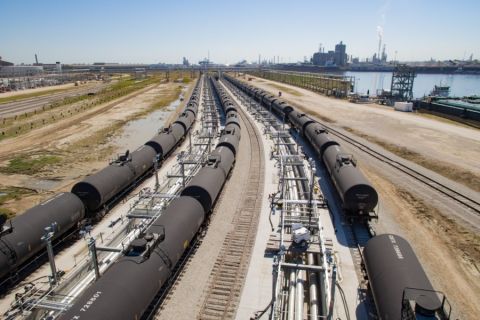While governments have their definitions of a Small to Medium Enterprise (SME), mine is when an SME has an annual turnover that is less than the stationery budget of its average client. In some cases, it’s even less than the Post-it Note budget. As an engineer, I know this isn’t a very scientific measure, but it does encapsulate the dramatic disparity in size, when comparing some business relationships in the oil industry.
As the disparity in size grows, it becomes more and more difficult for companies to work together effectively. Outlooks change, business systems are different, and decisions are made at a different pace. Larger companies respond to this situation by trimming their lists of approved suppliers so they effectively end up dealing with larger players.
This approach works fine for commodity products such as rig supplies and stationery that can be purchased efficiently through buyers. However, when outsourcing requirements for innovative customized solutions, the relationship is very different. Predictably, only those operators and service companies that nurture innovation within their ranks succeed in making relationships work with small, niche suppliers of innovation and design.
The quest for innovation
As the price of oil fluctuates, so does the industry’s approach to moving technology forward. When the price of oil was low, many operators looked to major service companies to devise custom solutions. However, when it comes to developing bespoke equipment, they are frequently unable, or unwilling, to produce the solution. The pressure that large overheads and short-term investor expectations places on the bottom line often means that there is little incentive for the service company to develop equipment that doesn’t have an immediate industry-wide market.
As today’s industry pushes further into more challenging territory, many operators are taking back control. Instead of turning to major service companies for custom solutions, they have expanded their engineering departments, increased their research and development budgets and tasked them with designing new technologies. Today’s operator knows what it wants, has the cash to invest, and is acutely aware of whether the technology is worth the investment.
That said, operators or service companies sometimes don’t have the facilities or staff to build equipment or develop these technologies solely in-house. It is at this point that the enlightened operator engineer seeks out the experienced SME design firm and says, “Here are the specs. Now please make it, test it, have it certified and manufacture it.”
It’s teamwork
Just as in athletics, where the 13-ft by 328-ft (4-m by 100-m) relay is often won by the team with the best teamwork rather than the fastest runners, innovation is created by the companies that work best together, rather than necessarily those with the brightest ideas.
Let’s get things straight: SMEs are only part of the innovation equation. Innovation does not happen in a vacuum. SMEs have the freedom to come up with ideas, but it is the large companies that make them fly, so it is the combination of the two that is the key to success.
There, however, are some key factors to bear in mind when forging a marriage between the two. The SME must be prepared to be flexible and draw upon its skills and ingenuity to come up with a bespoke solution, against the backdrop of the design brief. Equally, operator engineers must recognize that the project must be funded using a different model to that employed when dealing with large companies. The SME model should allow for development costs to be recovered, and provide a reasonable rate of return over a short time frame, even if the solution is never used. Conversely, the operator must resist the temptation to commoditize a successful solution, and keep all of the value for itself. It should allow the SME to reap a well-deserved reward by allowing it to grow and sell the technology on the open market.
Groundwork for success
In an effort to offer an informed perspective about how our industry is fostering innovation, I spoke with engineers employed by operators and major service companies. I was surprised at how few of them seek out the SME for custom design services. Why not? They cited their naturally conservative nature, desire to work within their comfort zone, and fear that the SME wouldn’t deliver. In reality, most SME design firms are headed by engineers who launched their careers with major operators and service companies so they are familiar with the large company practices, what it’s like to work as part of a “chain of command,” how decisions are made, and what it takes to obtain approval and funding of new projects. The SME has a duty to communicate that understanding to the operator engineer.
Communication is the key
Realistically, there is no way to guarantee success, but practicing open communications goes a long way to overcoming some business practices that can impede efficient progress. One such practice is the reporting requirement. In our industry, this has been addressed to a certain extent. For example, it is common practice for operators to import service company engineers to work onsite at their facility until the contract is complete. Because the supplier engineer is physically onsite, he works as part of the team, and communications are instantaneous.
However, when supplying design and development services, it is another matter. This type of work must be carried out at the supplier’s facility so that testing can be carried out in its laboratory with specialist testing equipment. How then can the operator be kept apprised of progress? Our industry could benefit a great deal by borrowing from the automotive industry. When, for example,
As relationships built on open communications evolve, so do their methods of doing business. One positive knock-on effect is that the standard 50-page contract may no longer be necessary. Building upon a shared history of teamwork and communication, there is no need to detail every contingency. Future projects will progress even more rapidly without becoming bogged down in administration.
Making the match
One aspect I haven’t yet touched on is this: SMEs with the expertise to develop new technologies often don’t have the cash flow to develop them, while companies that are in real need of these technologies have the financial means, but don’t approach the SME to make them a reality.
What can be done to break this impasse and create a working partnership? Operator engineers must be prepared to take a commercial risk. They must follow the lead of the enlightened operator engineer who will always appreciate the value of the SME. Conversely, the SME must continue to seek out the enlightened engineer and fertilize lingering green shoots of innovation.
I believe that there is tremendous scope for the SME — Large company relationship to contribute a great deal more to our industry. Just as the SME relies on the confidence and the means of the large company, the large company looks to the SME for flexibility and innovation to help pioneer invaluable technology forward.
If each understands what it can do for the other, then maybe — just maybe — the rate at which we adopt technology in those sectors that desperately need it will catch up with those that are making great strides.
Recommended Reading
Canadian Railway Companies Brace for Strike
2024-04-25 - A service disruption caused by a strike in May could delay freight deliveries of petrochemicals.
Enterprise’s SPOT Deepwater Port Struggles for Customers
2024-04-25 - Years of regulatory delays, a loss of commercial backers and slowing U.S. shale production has Enterprise Products Partners’ Sea Port Oil Terminal and rival projects without secured customers, energy industry executives say.
Report: Crescent Midstream Exploring $1.3B Sale
2024-04-23 - Sources say another company is considering $1.3B acquisition for Crescent Midstream’s facilities and pipelines focused on Louisiana and the Gulf of Mexico.
For Sale? Trans Mountain Pipeline Tentatively on the Market
2024-04-22 - Politics and tariffs may delay ownership transfer of the Trans Mountain Pipeline, which the Canadian government spent CA$34 billion to build.
Energy Transfer Announces Cash Distribution on Series I Units
2024-04-22 - Energy Transfer’s distribution will be payable May 15 to Series I unitholders of record by May 1.




